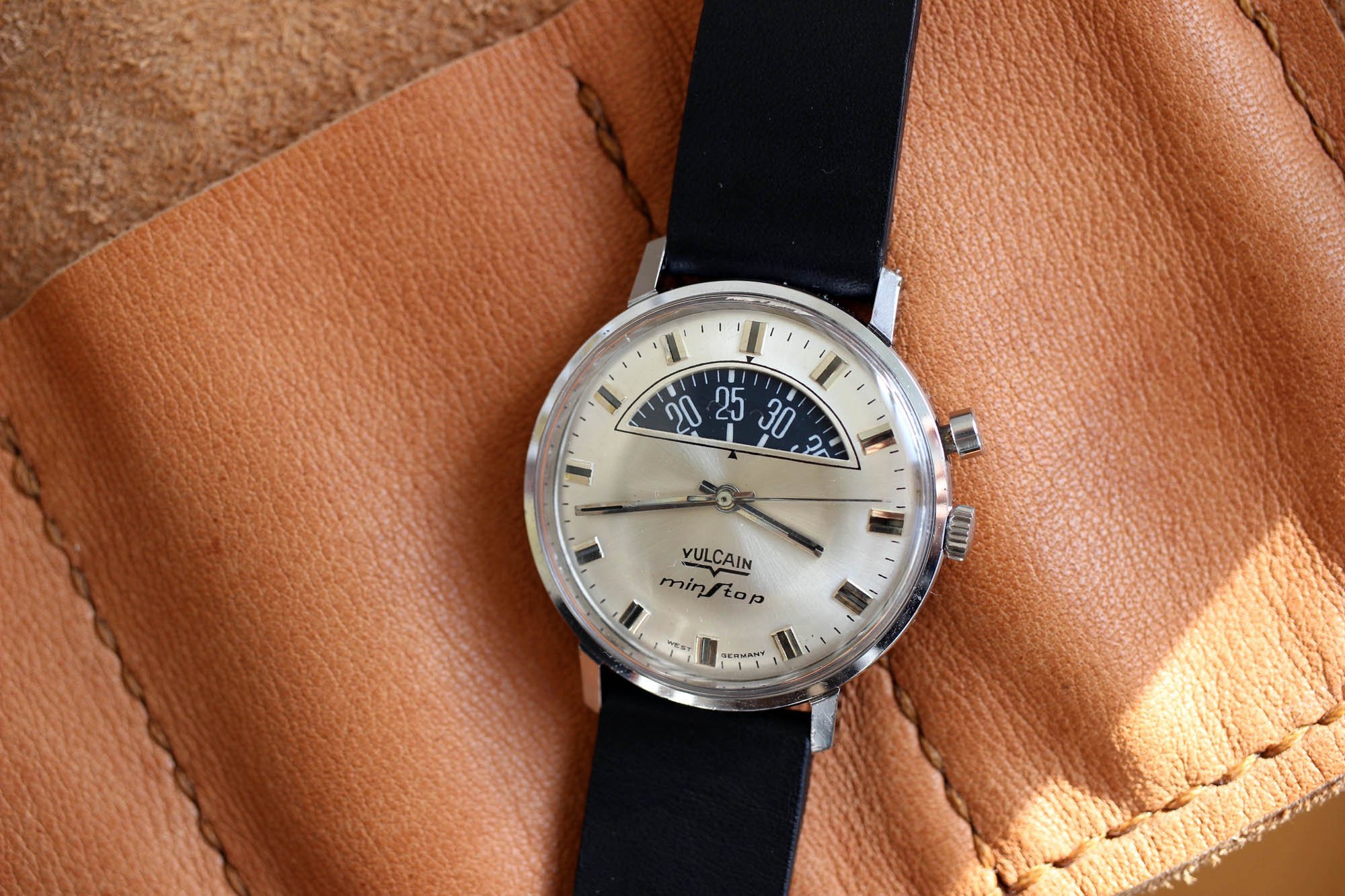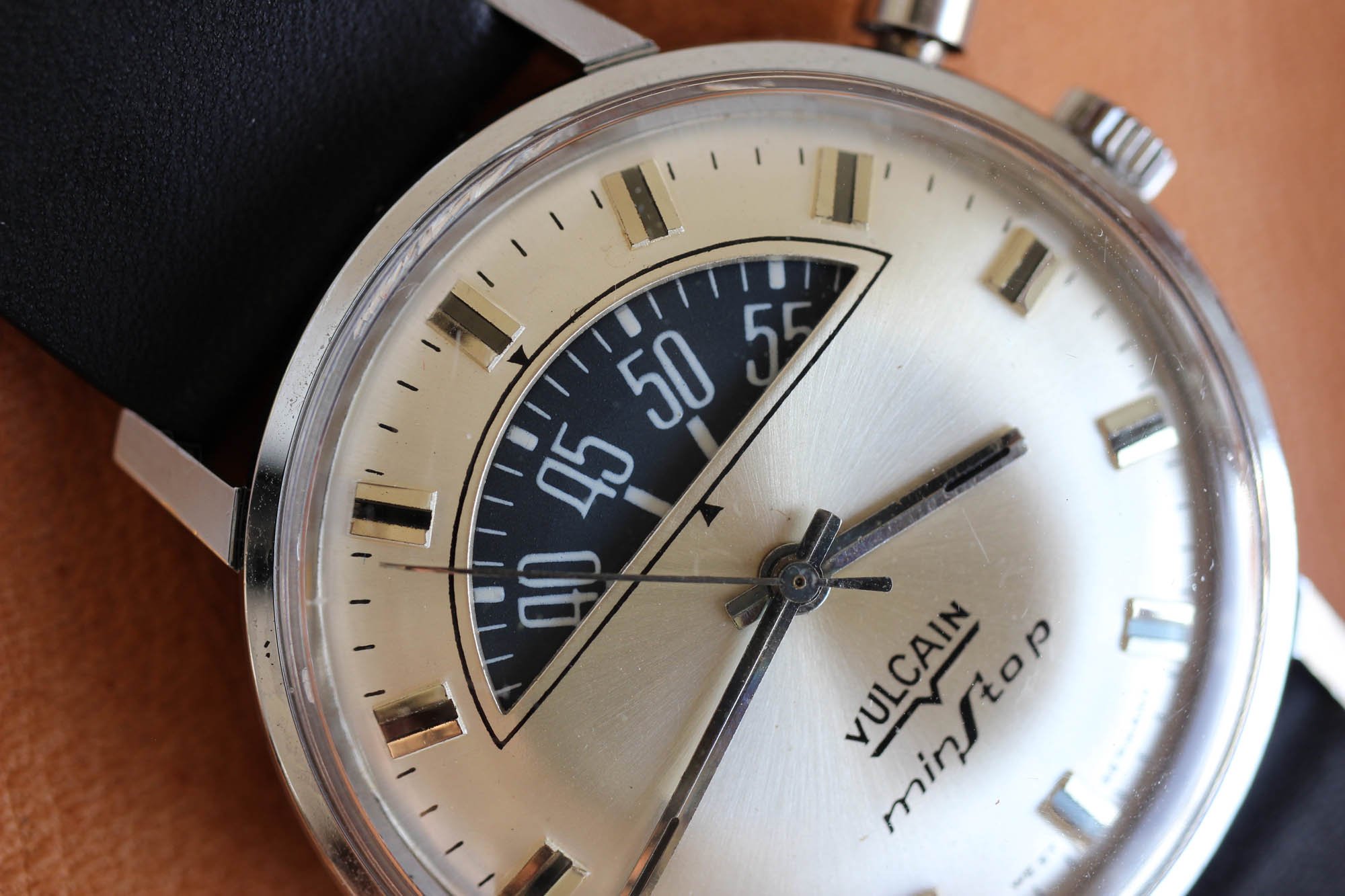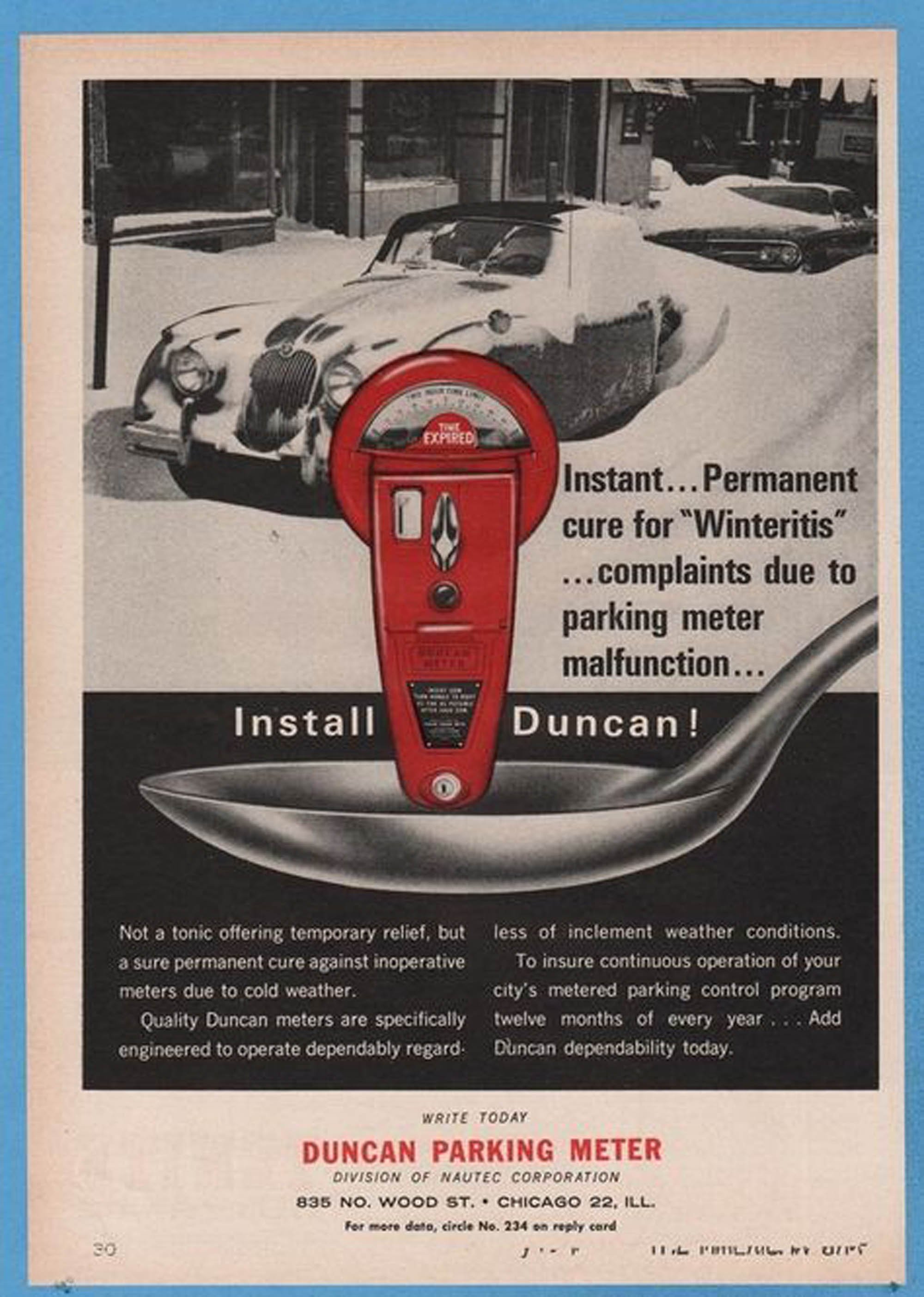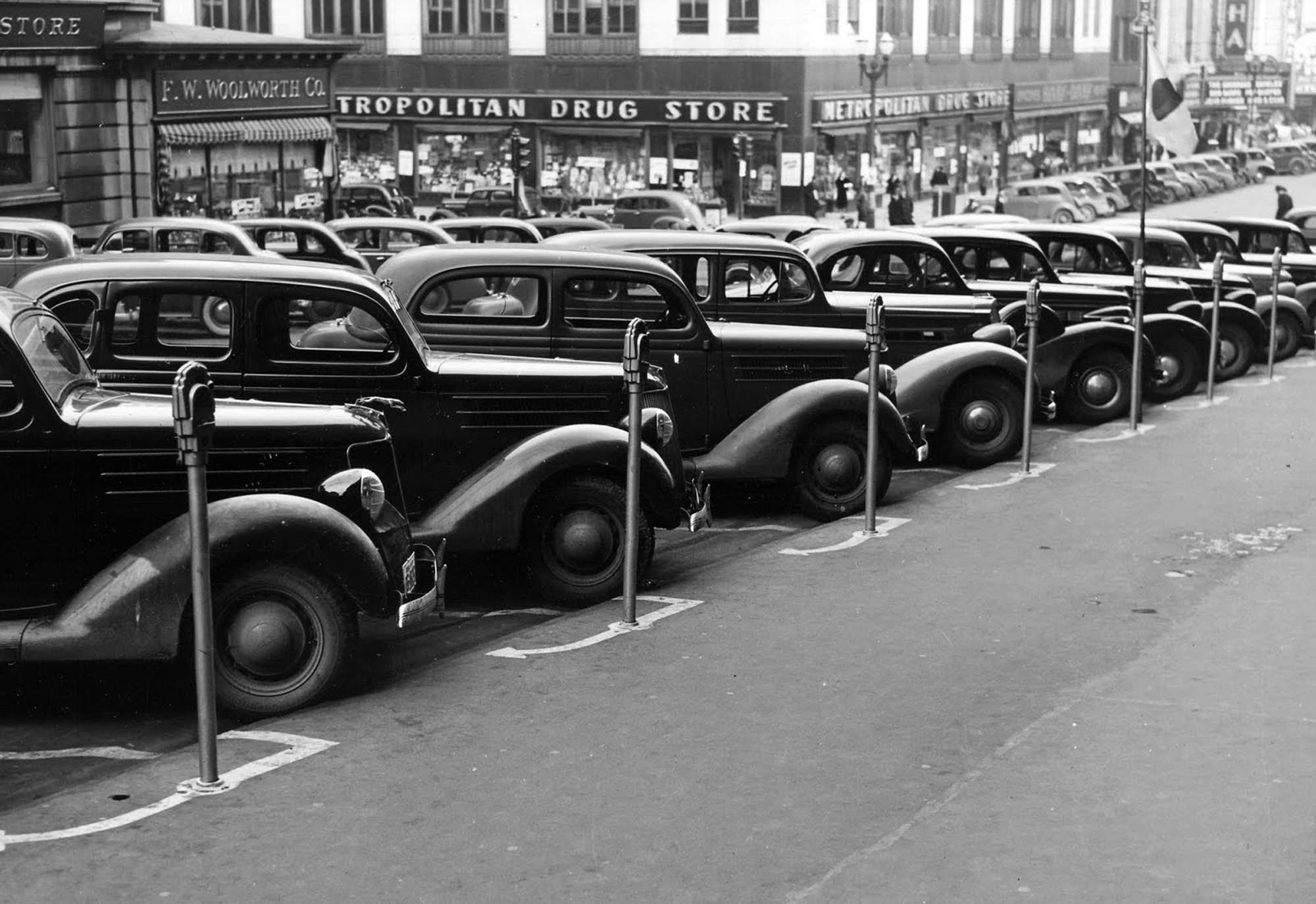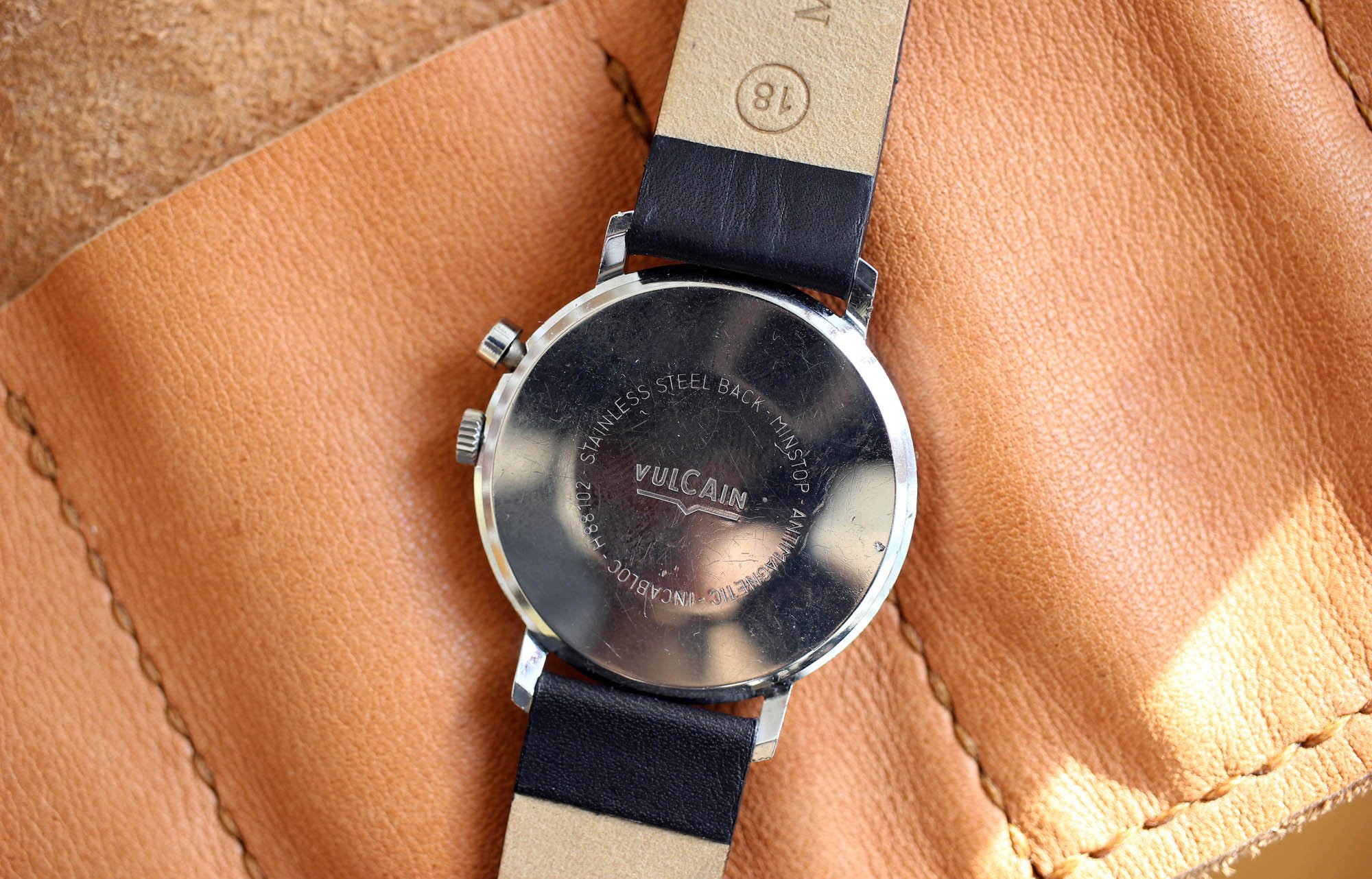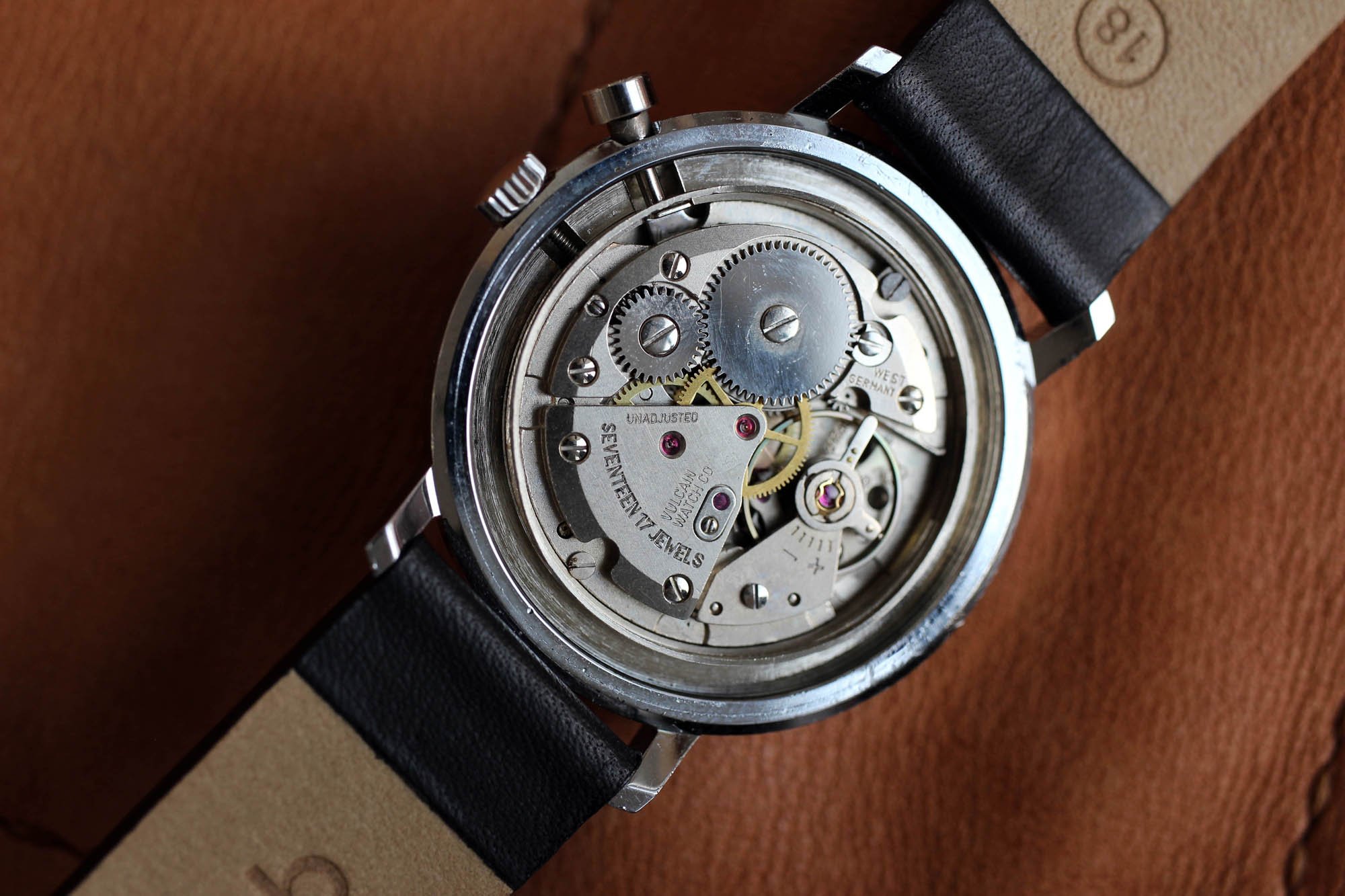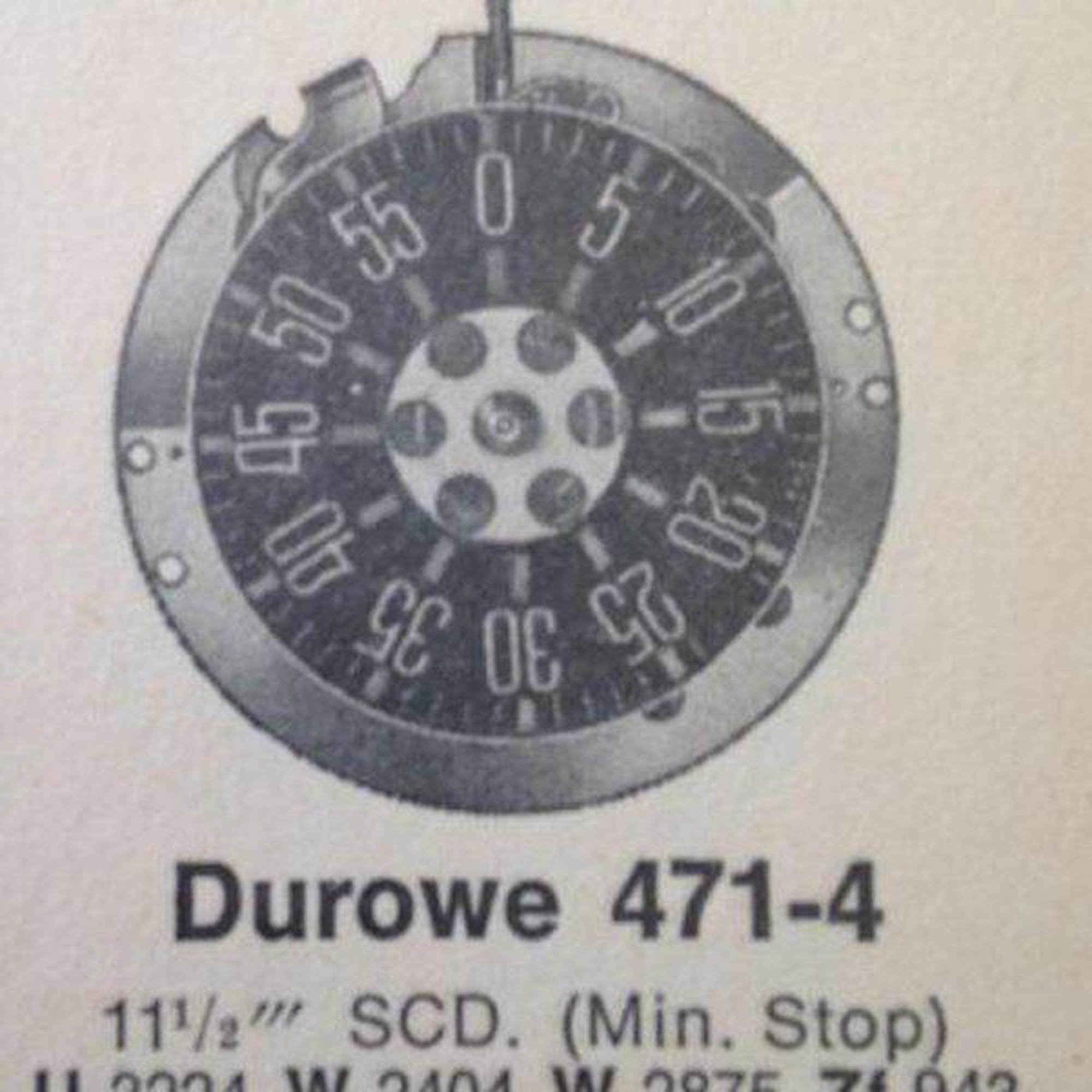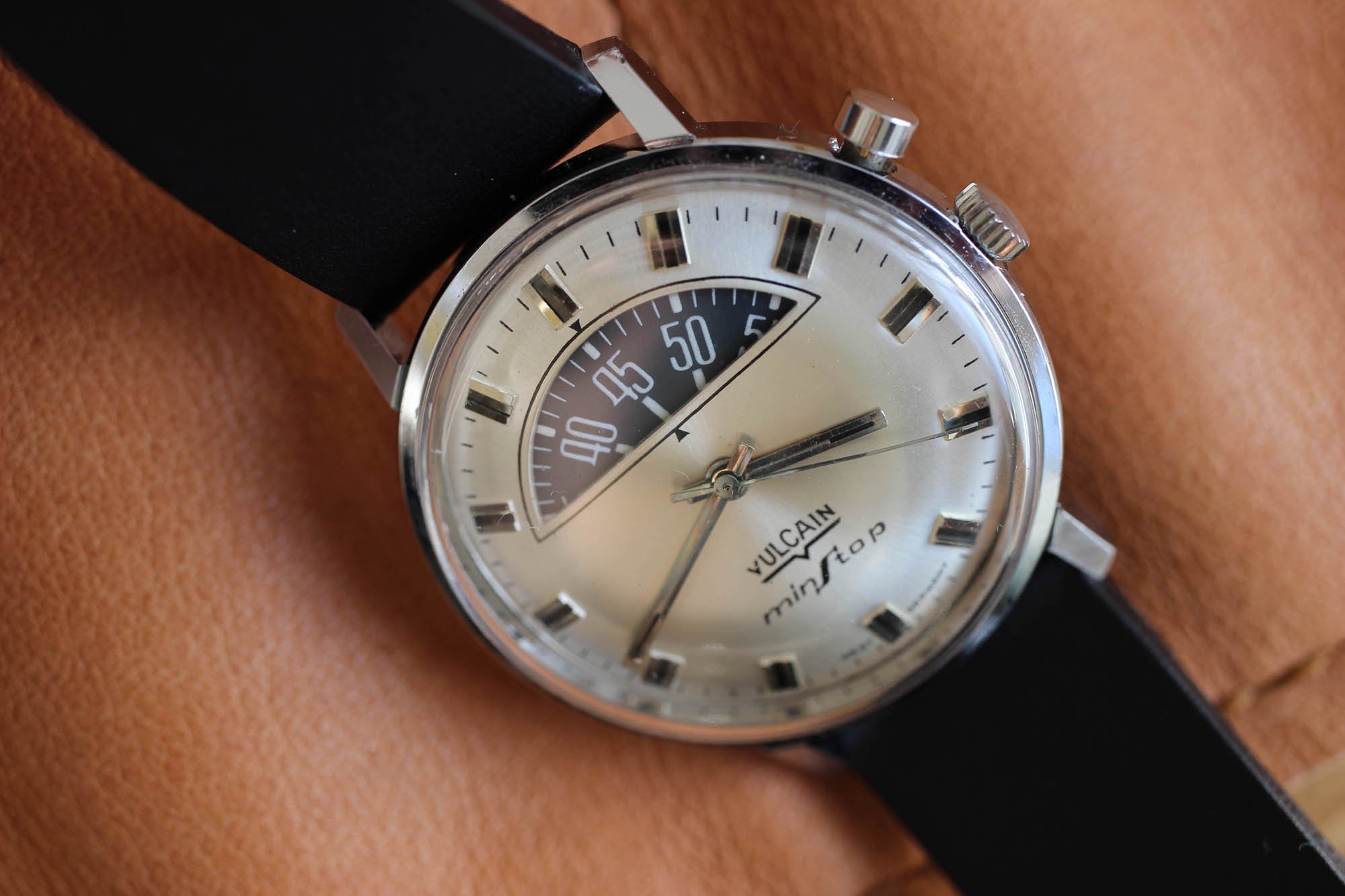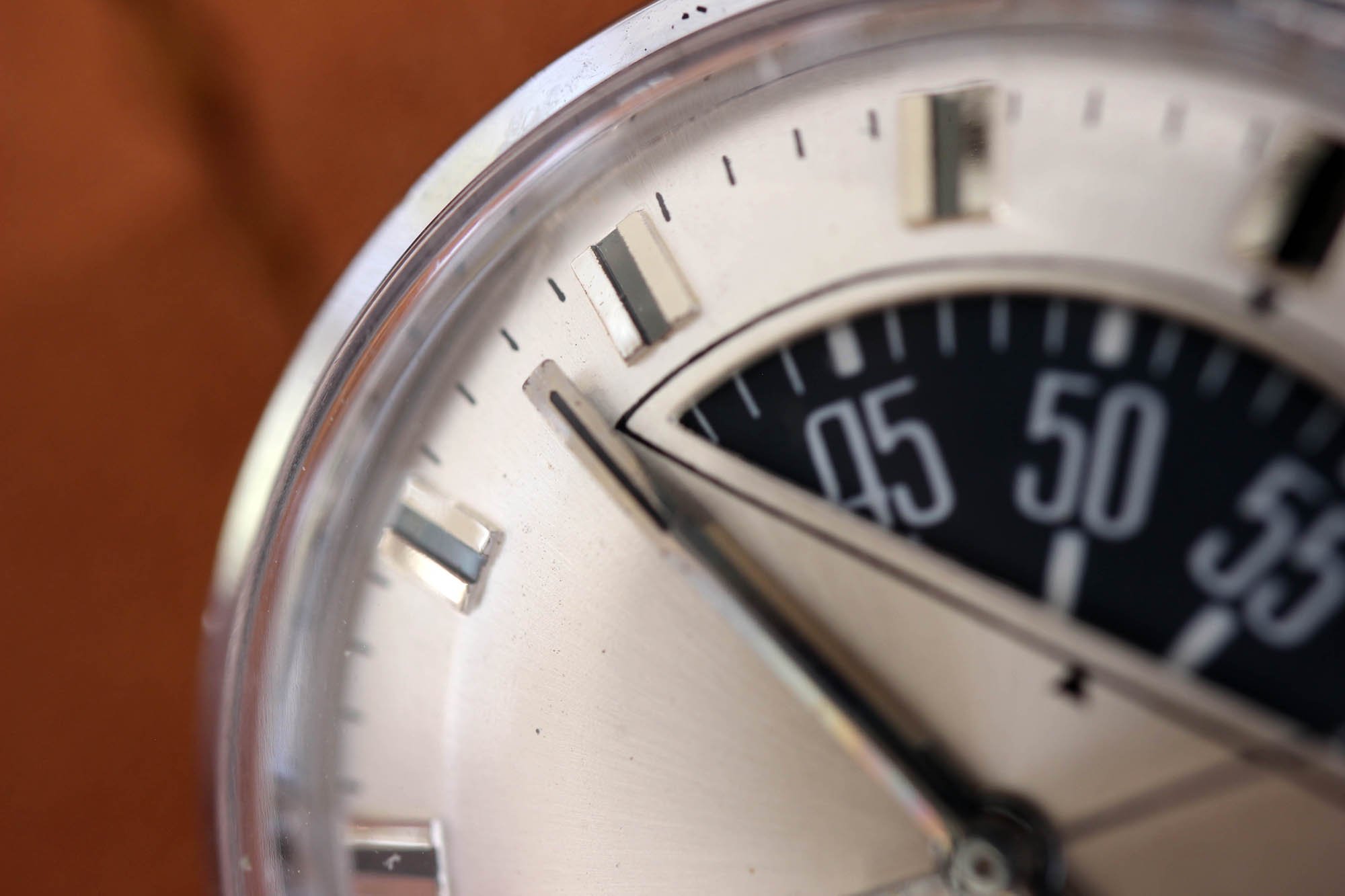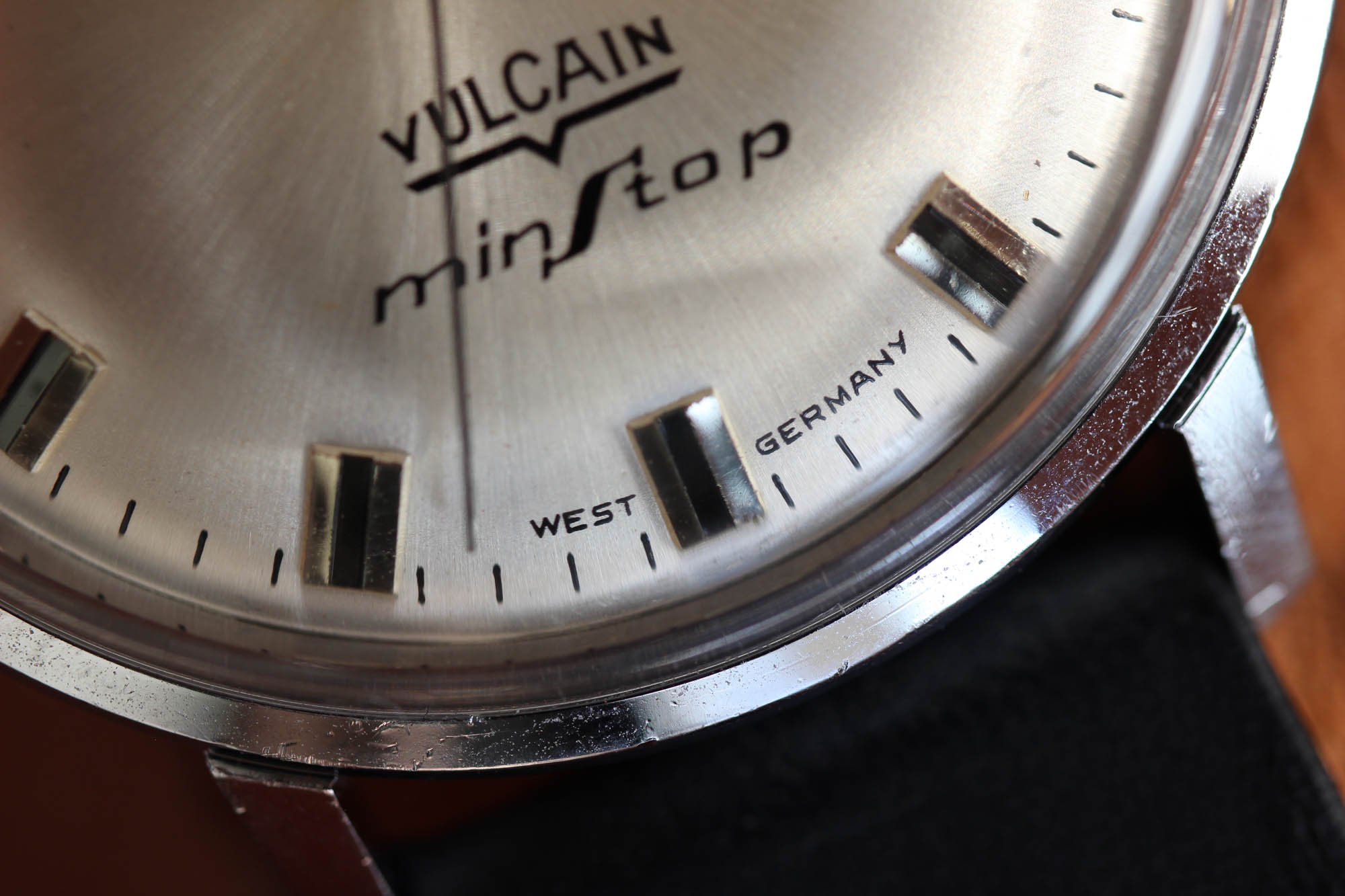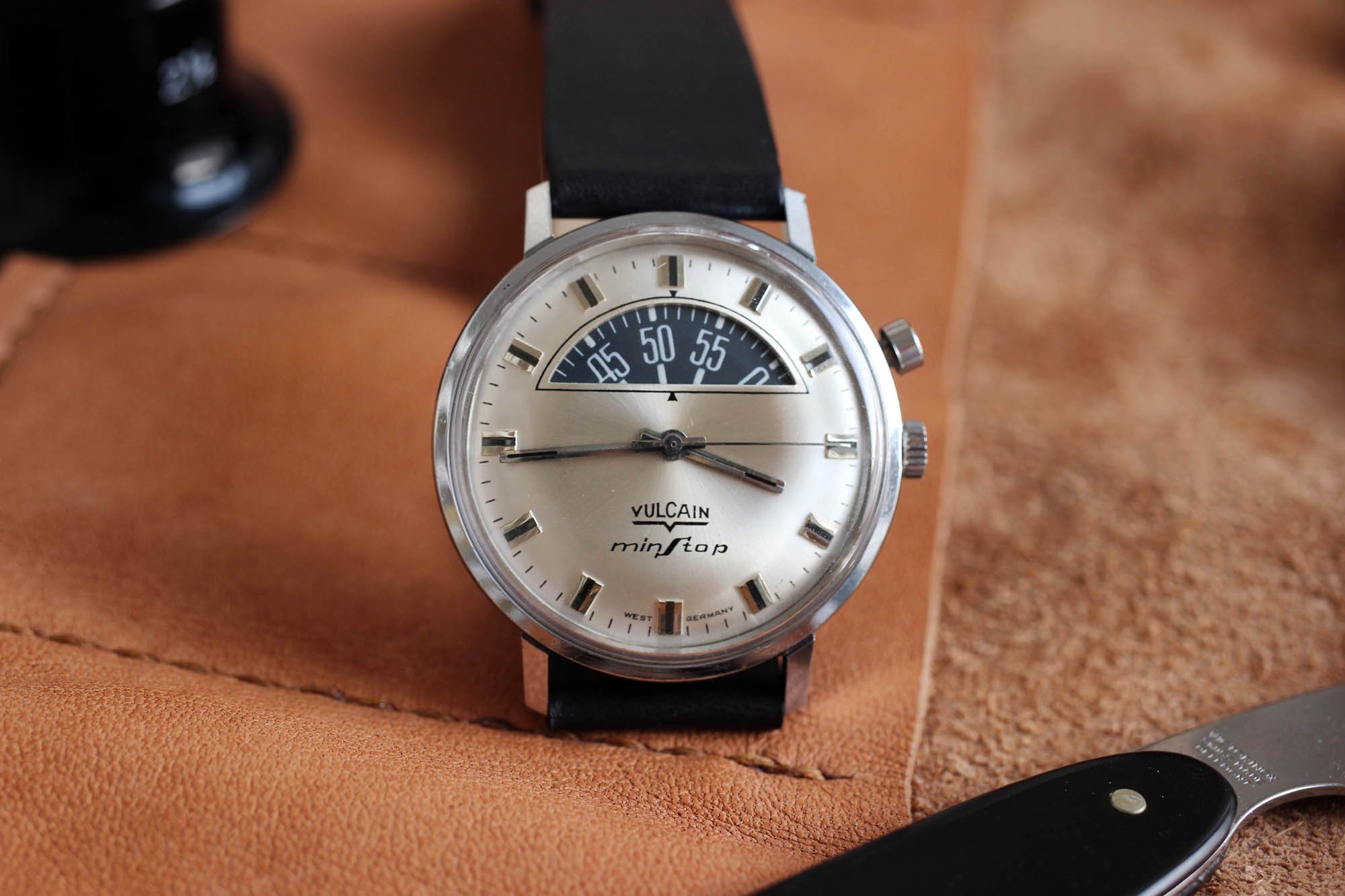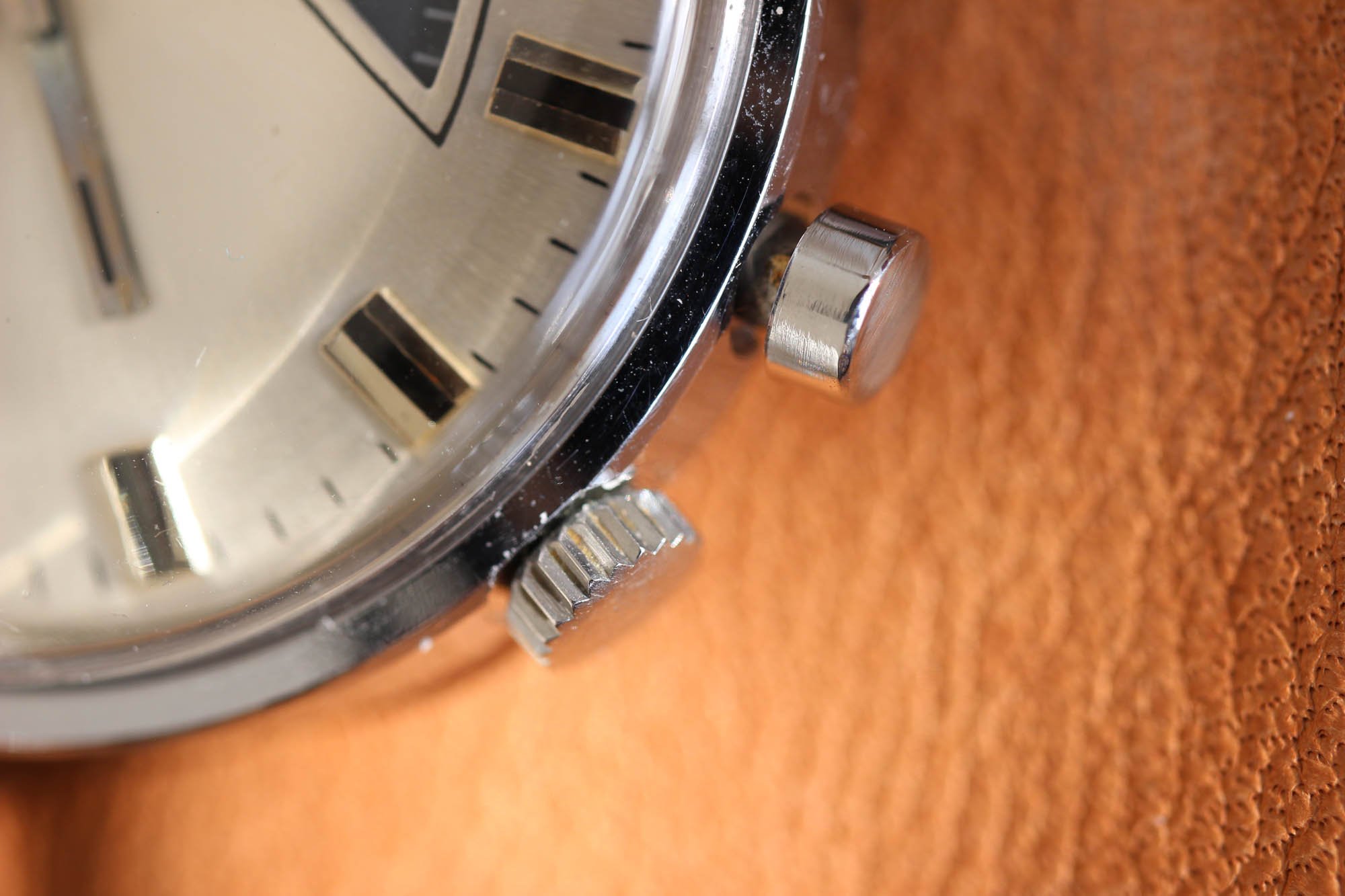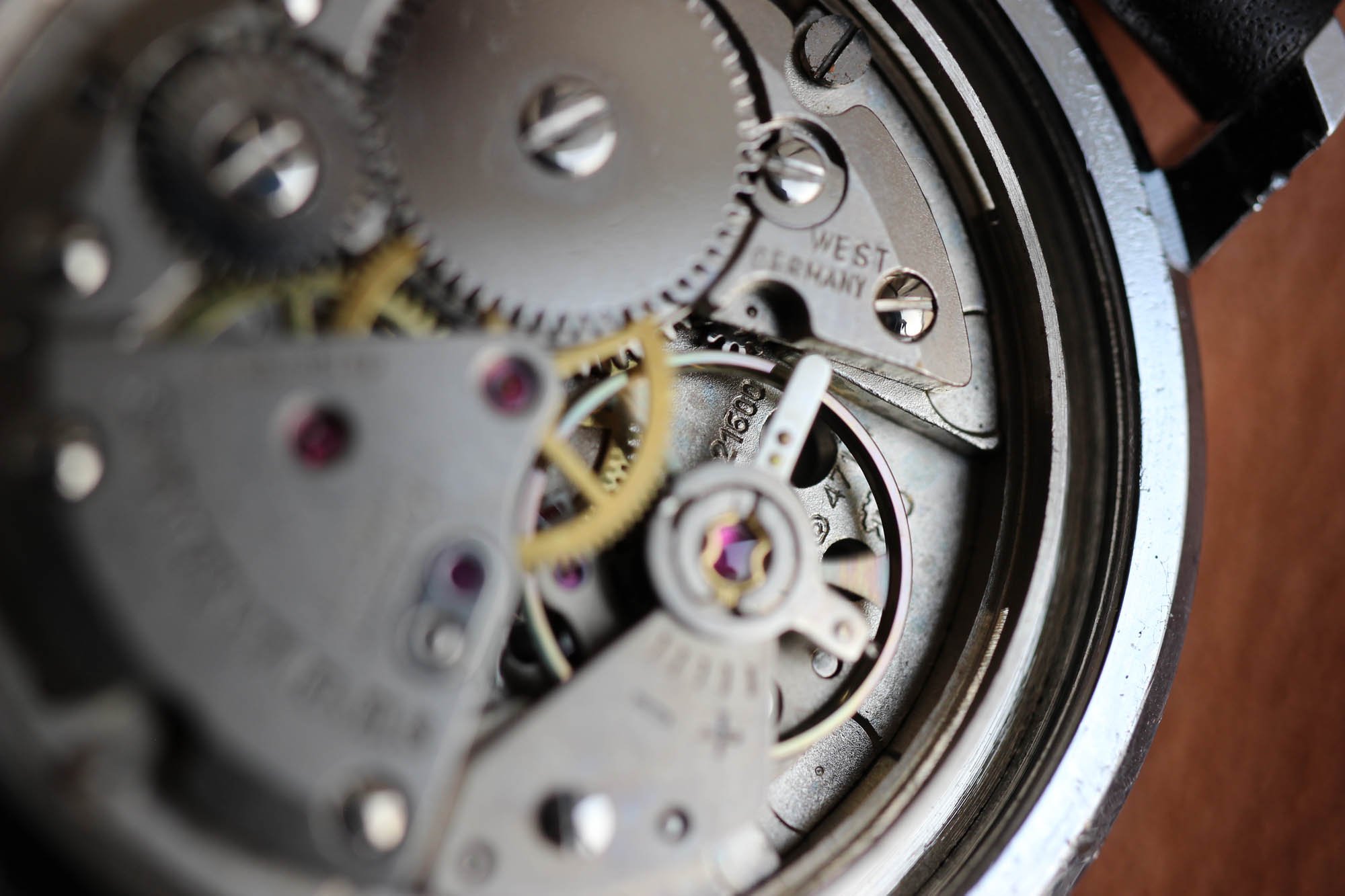#TBT Vulcain MinStop Parking Meter Watch
A real flyback stopwatchVulcain MinStop, made in West-Germany. Also known as a parking meter watch for precise timing of your parking time.
About 60 years ago, not everyone was super excited about chronographs as we are today. Most watches were much smaller than they are today, except for those bulky chronographs, mainly used by people who actually had a purpose for them. But some smart engineers in Germany decided to combine a dress watch with a chronograph and keep the proportions acceptable. And not a regular chronograph, but one to keep track of your running parking meter.
Vulcain MinStop Parking Meter Watch
Parking meter watch demand
Was there really a demand for these? Well, I don’t know the precise production volumes, but it definitely wasn’t a limited run. If you want to read about all the brands offering watches with a special “parking meter” complication, you might as well take the day off. Taking it alphabetically, you can find this particular complication implemented in Anker, Buren, Exona, Gama, Indus, Lauréat, Laurens, Leca, Lip, Melux, Mervos, Para, Paul Garnier, Perrier, Redue, Roxy, Vantage and Verona watches. The last one and probably the most famous amongst them is the Vulcain that we have here today.
The designers found a gentle, yet striking way of implementing the original parking meter design traces into a simple dial.
Parking meter origins
The story starts with the world’s first parking meter that was installed in Oklahoma City in 1935. It stood on a pole and featured a coin slot and a knob. When you dropped a nickel inside, the timing mechanism was activated, with a minute pointer visible through a small viewing window. When the paid parking time expired, a red tag popped out dramatically. Industrial production of the Park-O-Meter started in 1936. If you saw one unstripped, you stumbled upon basically the similar metalwork that hides inside your mechanical timepieces. It is not surprising that these machines often brake during the wintertime. Flipping through old Park-O-Meter print ads makes for some fun reading too.
More cars, more parking
This configuration lasted for more than 40 years until the mid-1980s when only a few changes were made to the exterior design, such as a double-headed design to cover two adjacent parking spaces and the incorporation of new materials and production techniques. As seen below, parking meters were placed at 20-foot intervals along the curb, matching painted parking spaces. By the early 1940s, there were more than 140,000 parking meters operating in the United States. Today, the Park-O-Meter No. 1 is on display in the Statehood Gallery of the Oklahoma Historical Society. But no parking meter wristwatches so far in this story. To get a closer look at how they came to be, we have to pivot the story to Europe.
Innovative Germans
After Basel (Switzerland) and Stockholm (Sweden), Duisburg became the first German city to set parking meters on their parking spots. Initially, they were installed every 20 meters, costing four hundred German marks each. This was in 1954, almost twenty years after the first parking meter was installed in the United States. Just a few years after introducing the parking meter in Germany, the first parking watch was introduced. It is not clear to me which brand came up with the concept. Production-wise, it was neither Swiss or American, but German instead, housing an adjusted Durowe manual movement. As we can see more or less the same watch design with an unorthodox West-Germany inscription on the edge of the dial used in multiple brands, its highly probable that they just licensed it.
Merge and acquisition business back in the day
If the Durowe movement ring a bell in relation to other quirky watches, you’re right! Earlier this year we introduced you to the obscure Lip Thermometer watch, which was powered by a Durowe movement as well. One detail, in particular, is very interesting in the history of Durowe. In February 1959, Durowe was sold to the Timex Corporation, the primary motivation of the sale being getting access to Durowe research on electronic timepieces. Hypothesizing that the involvement of the Americans helped the development of a parking meter watch would be sheer speculation. A mere seven years after the Timex acquisition, Durowe ended up as part of Ebauches S.A., soon to be merged under ETA.
Durowe parking meter movements
DuRoWe or Deutsche UhrenRohWerke produced a few calibers powering parking meter wristwatches. The first one dated from the mid-sixties to the late eighties was the Durowe 391-4, with the later caliber 471-4 lasting only until the seventies. There was also an automatic Durowe caliber 7524 movement available, with the rotor signed as a Duromat that was implemented into their last production years before Durowe too became another victim of the raiding quartz warriors.
A big lemon hole
I dare say that visually, the watch is a stunning piece. The designers found a gentle, yet striking way of implementing the original parking meter design traces into a simple dial. If I say striking, I’m talking about one of the biggest dial apertures in watch history, denuding another rotating disc. The lemon wedge-shaped dial aperture extends all the way from the tenth to the second-hour index. The size gives quite the spacious view on another slowly rotating minute recording disc. The minute disc runs continuously and works as a simple flyback chrono. Anytime you press the pusher at two (and you need to press hard and completely down), the disc flies back to zero and starts counting the elapsed minutes again.
Tight game
My Vulcain MinStop is powered by a later, but not the last Durowe caliber 471-4, that belongs to the 450 family with an increased 18000vph to 21600vph frequency. The reset system is independent of the time and its lever tends to brake occasionally. Quite understandably, the bigger the disc, the more hassle it is to operate it. Note that the contrasting parking meter disc turns under the dial with little space left between the two. It requires incredible precision to get that big disc to slide without touching the dial for sixty years. Quite a temptation right? To measure the parking meter timing precision, I put it to the test against my Omega Speedmaster 60th LE and the results were beyond satisfying.
When not on my wrist, I leave my Vulcain MinStop to proudly rest next to his Cricket brothers. I don’t see it as a second-class citizen compared to them, quite the opposite. The silver convex dial has notable brushed effects that age to slightly creamy tones. The parking meter window is framed with a thin black frame featuring a combo of black arrows pointing to the middle for better reading of elapsed time. Watch the video:
No numbers at the thick hour indexes divided by a black stripe in the middle leave the parking meter disc to shine. And shine it does! The font selection is very unique. After some quality time on my wrist I can declare in full honesty that despite the ostentatious parking meter disc, standard time reading is perfect as well. You can easily separate the two, yet they live in perfect design symbiosis. And did I mention the West-Germany sign at the edge?! Sure I did. I just can‘t get enough of that.
Hunting down the Vulcain MinStop
It took me exactly two years, from first noticing it until I found one. There were two or three MinStop models, but they came in gold plated cases and without a Vulcain logo. I stopped proactively looking for it. As it usually goes, when you least expect it, some local Austrian site offered one. It had bad pictures, a crown mounted instead of a pusher and the dial seemed a bit damaged around the fifth marker. But as it was offered for around 100 euros and had a fitted original Breitling strap with an original buckle, so I took a shot. What a deal, as they usually go multiples of that price.
If you want to read about all the brands offering parking meters, you might as well take the day off.
A few weeks in the spa
What seemed as dial damage was only a wrongly installed seal. My genius watchmaer Tomas got rid of the redundant crown and crafted a new pusher for me on his machinery based on plenty of reference pictures I fed him. Would you notice that it’s a replacement pusher? The case condition is amazing and the same can be said about the dial. The movement beats strongly and precisely. Ready to be worn. If there is one issue that my watchmaker mentioned, it is the way the movement sits in the case. The 17 jewels movement itself is of good quality, but the case fitting is a bit wobbly.
Shotgun notes
There are many different core design variations available, including a green dialed or red dialed version. I also found pocket watches with a parking meter complication tempting. Occasionally, there are also diver versions with a rotating bezel on it, which looks a bit weird, but I can see where the idea came from. Besides the most typical round case shape, you can also find cushion or pillowcases with a sunburst effect. Later versions have smaller dial apertures and I even saw a model with a parking meter at the bottom. The Durowe movements are marked with and ‚INT’ or a framed ‚D‘.
Maintenance and service of street parking meters often exceeded the revenue they generated. I have the feeling the maintenance and service of this Vulcain MinStop will never exceed the joy it will bring for decades to come. Happy hunting and see you next Thursday.

